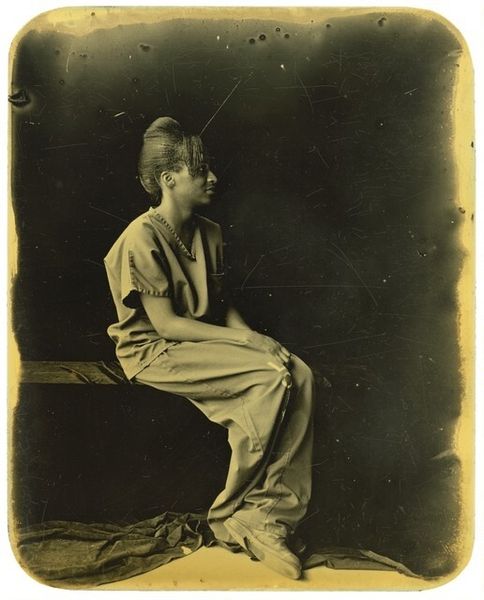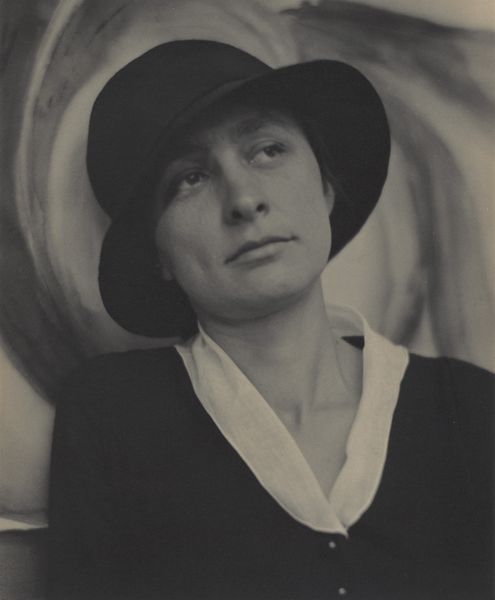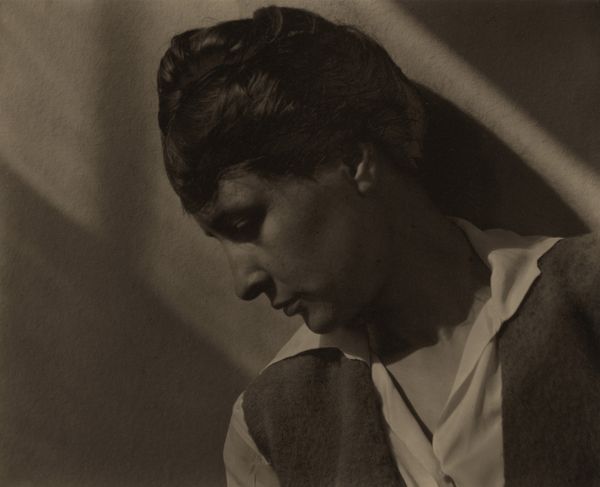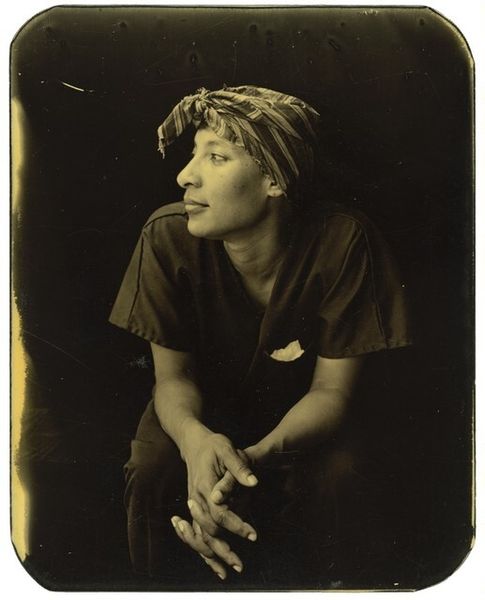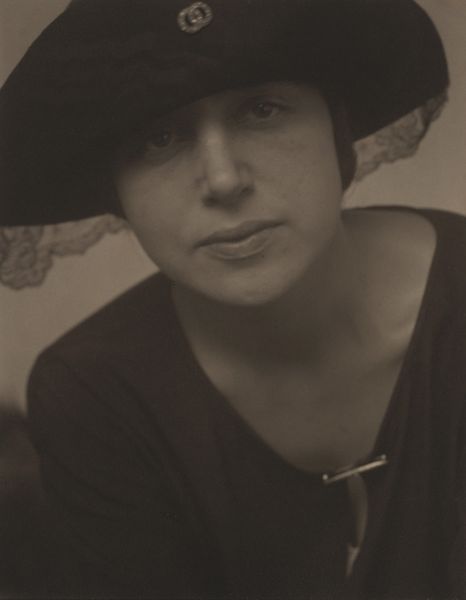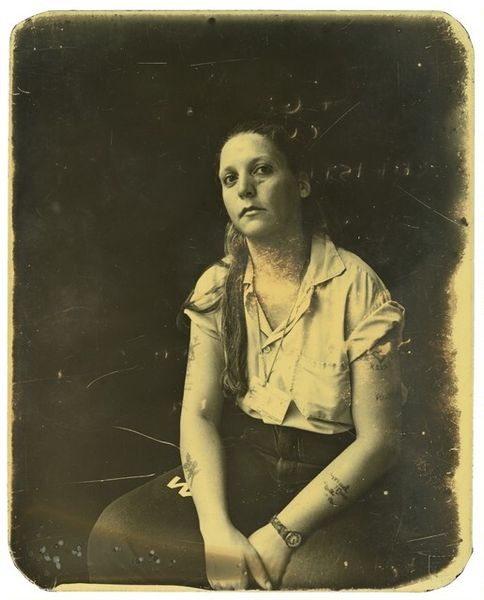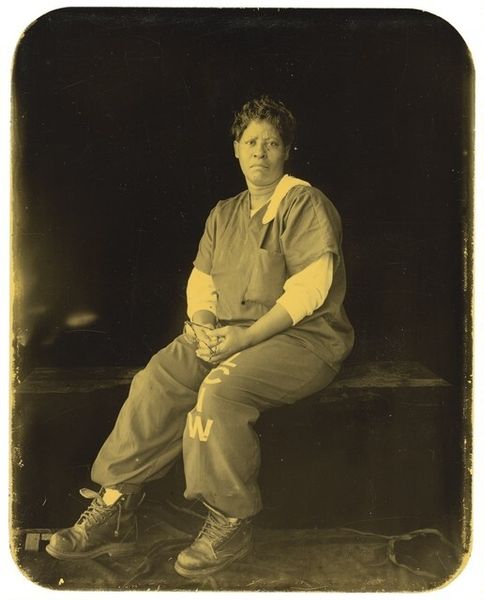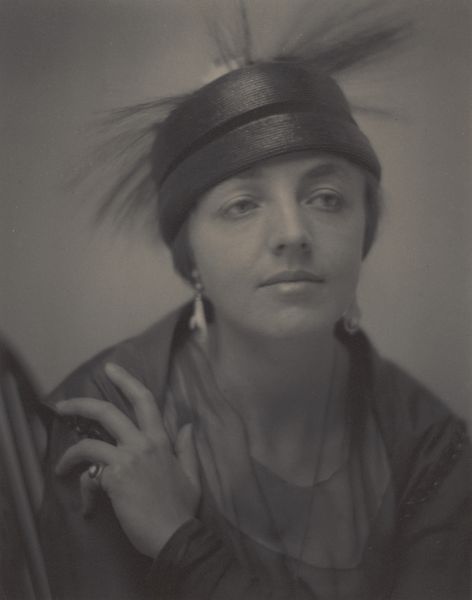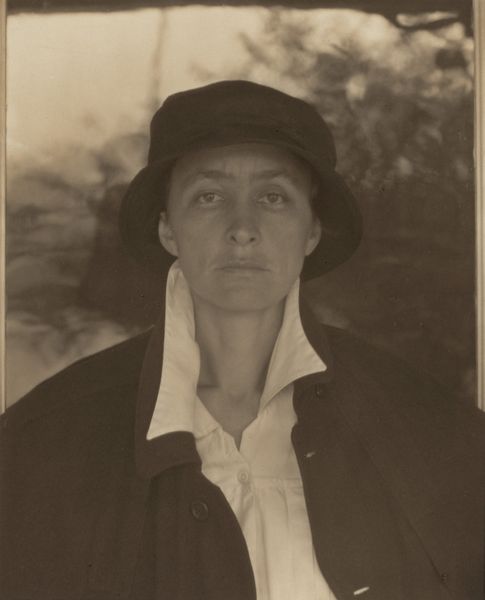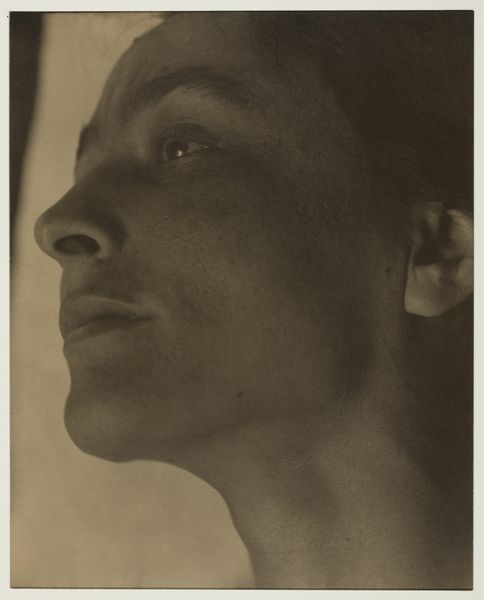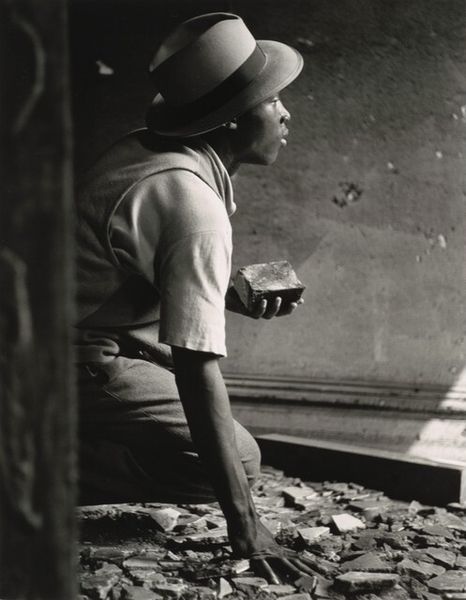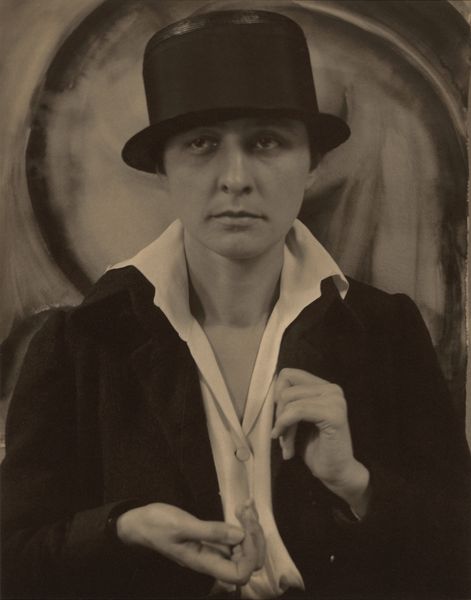
photography, gelatin-silver-print
#
portrait
#
black and white photography
#
black and white format
#
photography
#
black and white
#
gelatin-silver-print
#
monochrome photography
#
ashcan-school
#
modernism
#
realism
Dimensions: image/sheet: 8.6 × 8.2 cm (3 3/8 × 3 1/4 in.) mount (1): 9.2 × 8.5 cm (3 5/8 × 3 3/8 in.) mount (2): 60.3 × 25.7 cm (23 3/4 × 10 1/8 in.)
Copyright: National Gallery of Art: CC0 1.0
Editor: This is Dorothea Lange's 1931 gelatin-silver print, "Dorothy Brett, Painter, Taos, New Mexico." It's a striking portrait; her gaze is so direct and the composition is really interesting. How do you interpret this work? Curator: For me, this portrait speaks volumes about the intersection of art, place, and identity. Lange’s lens captures Brett, a British painter deeply embedded in the Taos art colony. What does it mean for a woman artist, an outsider, to find community and creative freedom in the American Southwest during this period? The portrait is less about aesthetic beauty, and more about the lived experience and social context. Editor: That makes me think about the role of female artists, which is sometimes understated, even today. Curator: Exactly! We must also consider Brett’s association with figures like D.H. Lawrence and her complex relationship with British society. Lange’s photo asks: How do individuals negotiate their identities across different cultural landscapes? The setting itself, Taos, becomes a crucial element in understanding Brett's artistic journey. Editor: So it's less about her technique, and more about what her presence *means* in that location? Curator: Precisely. What power structures were at play? How does Brett, as a woman and an expatriate, navigate them? Whose stories get told, and how does Lange’s photography contribute to that narrative? Editor: This has really opened my eyes to viewing portraits in a much wider social context. I never thought about all these intersecting forces before. Curator: It's about moving beyond a surface-level reading and diving into the layers of identity, history, and cultural dynamics that shape both the artist and the artwork itself.
Comments
No comments
Be the first to comment and join the conversation on the ultimate creative platform.
